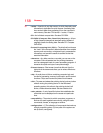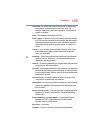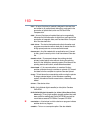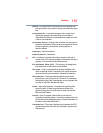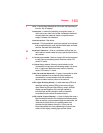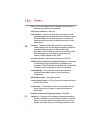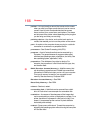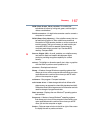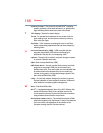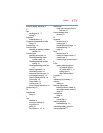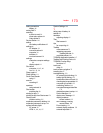
166
Glossary
pointer—An icon (usually an arrow) that moves on the screen
when you slide your finger across the touch pad or move a
mouse. Used to point to and select/activate on-screen
items, such as icons, menu items, and buttons. The shape
and purpose of the pointer varies depending on the program
you are using and what you are doing.
pointing device—Any device, such as the touch pad or a
mouse, that enables you to move the pointer on the screen.
port—A socket on the computer where you plug in a cable for
connection to a network or a peripheral device.
processor—See Central Processing Unit (CPU).
program—A set of instructions that can be executed by a
computer. The general classes of programs (also called
software) are operating system, application, and utility. See
also operating system, application, utility.
properties—The attributes of an object or device. For
example, the properties of a file include the file’s type, size,
and creation date.
R
RAM (Random Access Memory)—Volatile memory that
can be written to as well as read. Volatile here means that
information in RAM is lost when you turn off your computer.
This type of memory is used for your computer’s main
memory. See also memory. Compare ROM.
Random Access Memory—See RAM.
Read-Only Memory—See ROM.
reboot—See boot, restart.
removable disk—A disk that can be removed from a disk
drive. A Flash drive is one example of a removable disk.
resolution—A measure of the sharpness of the images that
can be produced by a printer or displayed on a screen. For a
printer, resolution is expressed in dots per inch (dpi). For a
screen, it is expressed as the number of pixels available
horizontally and vertically.
restart—Synonymous with reboot. To reset the computer by
reloading the operating system without turning the computer
off. See also boot.



